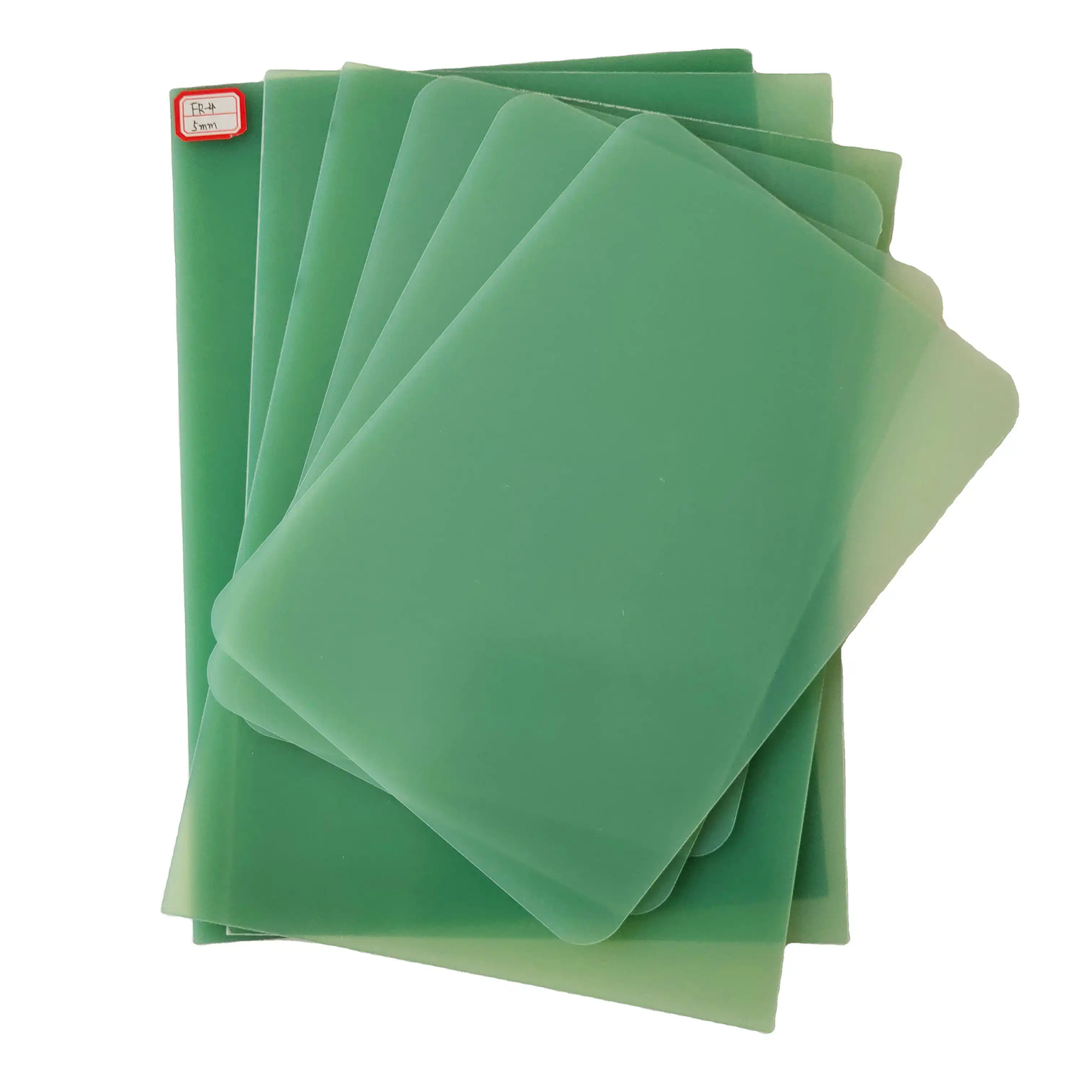How Do FR4 and G11 Differ in Performance and Applications?
Thermal Characteristics and Heat Resistance
FR4 sheet material is widely used in electronics, but its glass transition temperature (Tg) of around 130–140 °C limits performance in sustained high-heat environments. In comparison, G11 sheet, with a Tg exceeding 200 °C, delivers superior heat resistance and stability. This means G11 retains its structural integrity and insulation properties even under prolonged thermal stress, making it a preferred choice for demanding applications such as power electronics, industrial control systems, and aerospace assemblies where efficient heat management is essential.
Electrical Properties and Signal Integrity
FR4 offers solid electrical insulation for most standard applications, but G11 sheet takes performance further with lower dielectric constant and dissipation factor values. These characteristics help reduce signal loss and improve signal clarity, especially at high operating frequencies. As a result, G11 supports better transmission quality in high-speed data circuits, microwave systems, and RF boards. Its ability to maintain electrical performance over a wide temperature range makes it ideal for mission-critical electronics where consistent signal integrity is a top priority.
Mechanical Strength and Dimensional Stability
Both FR4 and G11 deliver strong mechanical performance, but G11 excels when it comes to flexural strength and dimensional stability at elevated temperatures. This advantage ensures components remain precise in shape and fit even under thermal cycling or mechanical stress. For applications like aerospace, defense electronics, and industrial instrumentation, where accuracy and durability are essential, G11 offers a more reliable long-term solution, reducing risks of deformation, misalignment, or mechanical failure in harsh operating environments.
Material Innovations in Electrical Insulation Over Time
Early Developments: From Bakelite to FR4
The history of electrical insulation materials began with Bakelite, introduced in the early 1900s as the first synthetic plastic. While it was revolutionary for its time, its heat tolerance and electrical performance were limited. The emergence of FR4 in the 1960s transformed the industry, combining flame resistance, durability, and reliable electrical insulation. This balance of properties made FR4 the preferred choice for printed circuit boards, enabling more compact, reliable, and high-performance electronic devices compared to earlier phenolic-based solutions.
Advanced Composites: Beyond Traditional Epoxy Resins
With the rapid advancement of electronics, material engineers sought solutions beyond standard epoxy resins. Modern composites such as advanced FR4 sheets incorporate improved resin systems and specialized reinforcements to deliver targeted performance benefits. These enhancements can improve heat resistance, reduce moisture absorption, and increase mechanical strength. By tailoring resin formulations and reinforcement types, manufacturers create materials suited for specialized applications, ranging from high-frequency telecommunications equipment to rugged aerospace systems, where traditional epoxy materials would not meet the performance demands.
Nanotechnology in Laminate Development
Nanotechnology has introduced a new level of precision in laminate design. By dispersing nanoparticles or nanofillers into the resin matrix, properties like thermal conductivity, flame resistance, and mechanical strength can be significantly enhanced without compromising weight or processability. This allows engineers to fine-tune materials for niche requirements, such as heat dissipation in high-power circuits or improved durability in extreme environments. The ability to control performance at the nanoscale is reshaping the possibilities for next-generation electronic materials.
Selection Criteria for Modern High-Performance Laminates
Thermal Management Considerations
In selecting a laminate for high-performance applications, thermal management is often a primary concern. Factors such as the glass transition temperature, thermal conductivity, and coefficient of thermal expansion must be carefully evaluated. Materials like G11 sheet, with their superior thermal properties, are often chosen for applications where heat dissipation and stability at high temperatures are critical.
Electrical Performance Requirements
The electrical characteristics of a laminate, such as G11 sheet, can significantly impact the performance of the final electronic device. Engineers must consider factors such as dielectric constant, loss tangent, and breakdown voltage when selecting materials. For high-frequency applications, laminates with low dielectric constants and loss tangents are preferred to minimize signal attenuation and distortion.
Environmental and Regulatory Compliance
Modern laminate selection must also take into account environmental and regulatory requirements. This includes considerations such as flame retardancy, halogen content, and compliance with regulations like RoHS (Restriction of Hazardous Substances). Advanced laminates are being developed to meet these stringent requirements while maintaining high performance.
Conclusion
The evolution from FR4 sheet to G11 and beyond reflects the dynamic nature of the electronics industry and the continuous drive for improved performance. As we look to the future, the development of electrical laminates will likely continue to push the boundaries of material science, with a focus on sustainability, miniaturization, and ever-higher performance. The selection of the right laminate for a given application remains a critical decision that can significantly impact the success of electronic designs in our increasingly connected and technologically advanced world.
Contact Us
For more information about our range of high-performance electrical laminates, including FR4 and G11 sheets, please contact us at info@jhd-material.com. Our team of experts is ready to assist you in selecting the ideal material for your specific application needs.






